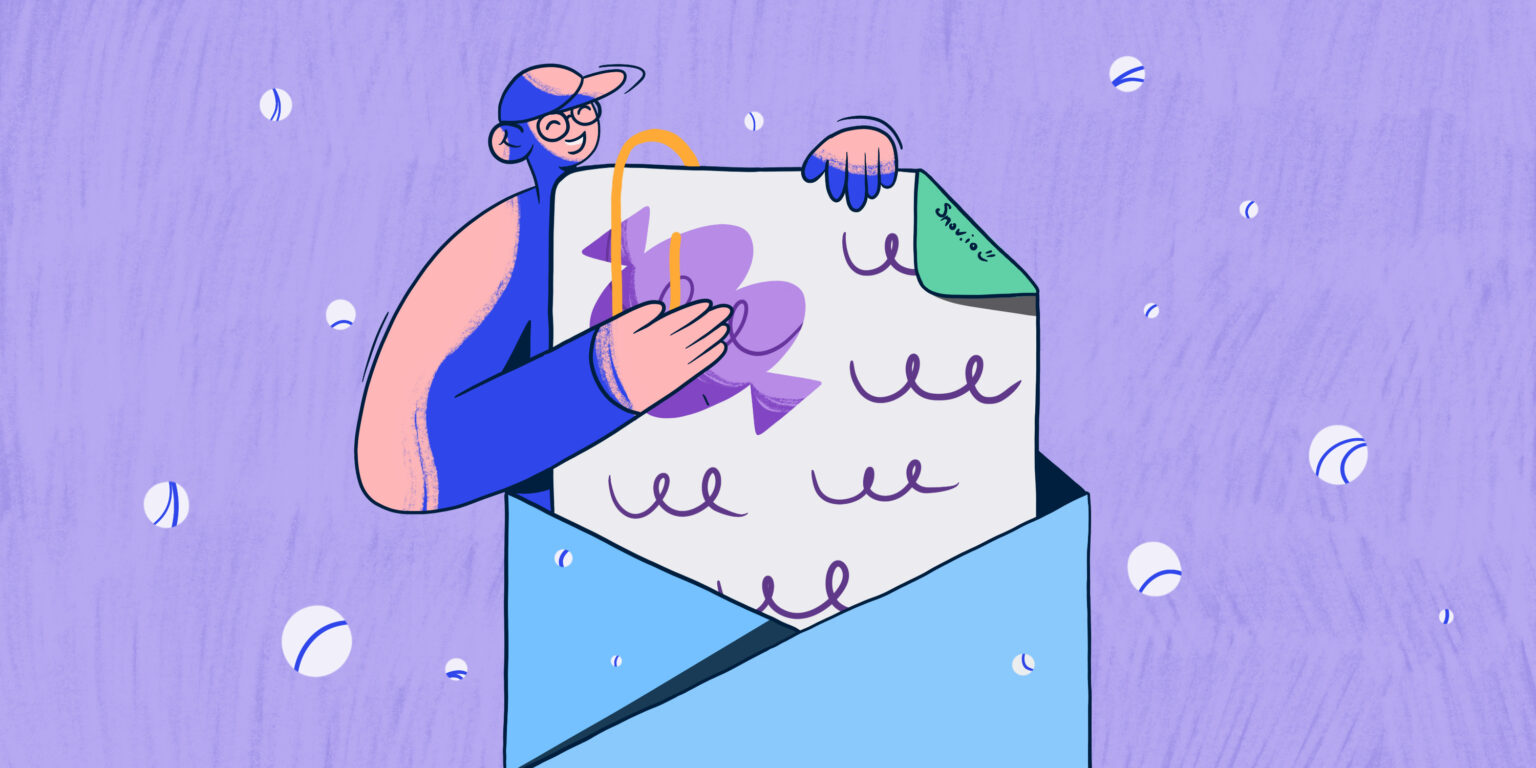Whatever product or service you offer to your potential customers, you understand that unless you demonstrate its real value, you may forget about closing your deal. So, when it comes to contacting prospects with cold emails, you should think about how to introduce your solution in the best possible way. That’s where attachments to emails may be helpful.
However, you may encounter some troubles with adding files to your message. Therefore, we’ve created this short guide to explain when this may become problematic and what you can do to make email attachments play their role.
Outline
Element of trust
Attachments in email may seem suspicious
Attachments are often used by marketers when writing a professional email as a way to incentivize the user to open an email. But when we are dealing with cold emailing, including anything else besides the actual text content can seem shady.
Cold email isn’t a bad thing per se, but attaching a file to it makes it look far more suspicious and makes it more complicated for emails to avoid spam filters. As a result, your email may fly to the spam folder or worse, get labeled by the ISP or mail client as spam, which will inevitably harm your sender’s reputation and hence your future email campaigns.
Solution: Do not send an email message that contains an attachment only – it doesn’t look professional at all and doesn’t raise any trust. By contrast, you will sound more trustworthy if you explain the attachment in the email message.
IP or domain reputation
Emails with attachments have a negative impact
Bulk cold emails including attachments are likely to result in a high number of complaints. Every domain is identified by ISP (Internet service provider) before it is processed, allowing to block pirate content or adult web pages through the labeling of domains and IPs.
A high complaint rate can catch your ISP’s attention, which may flag your IP or email address, and your email messages will either end up in the spam folder or completely blocked. Therefore, email attachments in cold emails can lead to the deletion of your email domain name from a list of reputable sources.

Solution: use attachments only in cases when you are contacting existing clients. Alternatively, if you do wish to attach files in emails, leave them for small personalized email campaigns.
Attachment format
A wrong format can lead to an email block
So you’ve decided to use an attachment for your campaign email. You need to make sure people will feel like looking into what’s inside. First of all, your email message in itself must convince the receiver to open/download the email attachment.

The problem occurs when a user gets anything besides documents and images — recipients will most likely decide to ignore any surprising untypical attachment.
Solution: It’s best to keep your attachments in .txt, .jpg, .gif, and.pdf formats. The latter may make a great addition to any nurturing email, but they can be difficult to create and edit. You can find out how to edit a PDF easily from our friends at JotForm.
If you still need to send a file in a different format, make sure you are using an acceptable email attachment format because every ESP has its limits on file formats (for example, look through at Gmail attachment limits).
Deliverability
Sending email with attachment of wrong size can keep your email from getting to the inbox
Email servers and clients have email sending limits, including email attachment size requirements, which depend on the types of email attachments. Exceeding these limits, your email messages risk being caught by spam filters.
That’s especially true about images. Email spammers love to use images to hide the text of their messages, undetectable to filters. So, if your attached image is too large, you are not safe from being labeled red by the email client.

Solution: Keep your attachment files no bigger than 10 mb. Gmail allows you to attach up to 25MB to a single email, but only if you’re emailing other Gmail users. If you need to send a bigger file, it’s safer and generally more acceptable to attach a link to the file on Google Drive. Besides hosting large files, Drive will check the file for malware, solving the trust issue.
With images, stick to under 60kb image attachment weight limit to keep your deliverability high. If you wish to learn more about the effect of the file size on deliverability, don’t hesitate to address the research by EmailOnAcid.
Responsiveness
Unadjusted image attachments may avert users from reading your email content
Apart from the image size, you should care about dimensions. If you just drag your image to the email body without thinking much about responsiveness, your user may get your pic shifted or else, which will definitely affect how they’ll perceive your message.

Solution: considering that 53% of emails are actually opened on mobile devices, ensure your image will look as great on both desktop and mobile. For this, size your images with that maximum 590 px width in mind for banners and 530 px for other types of images.
And remember that sizing an image from large to small is always better than stretching a small image to larger dimensions.
HTML email attachments
Files may not be displayed correctly
An attachment is not just a file: it can be an HTML-styled template with text in it. Companies tend to use such emails for promotional content instead of plain-text emails. However, these templates often don’t load well on every device and email client. Look at how some email clients treat images embedded in the HTML email body by default.

Solution: Use HTML templates carefully. Snov.io allows creating and sending HTML emails with ease. To learn more about how to embed pics in your emails, study this article.
Wrapping up
Attachments are a good addition to plain-text cold emails. Yet, you should send emails with attachments with special care as they carry a list of pitfalls you might deal with as soon as you decide to make your email brighter or more informative.
Before you attach something to your message, remember:
- never send the only-attachment email;
- choose to send email attachments to the existing rather than prospective customers;
- keep in mind the attachment format and size limits;
- be extra careful with HTML attachments.
You can do all this and more with the Snov.io cold email software and LinkedIn prospecting tool to create multichannel cold email campaigns and engage your leads from LinkedIn and beyond!



What would be a good way to send an attachment in an email campaign? Or should attachments in campaigns be avoided completely?
Thank you for your question.
Attachments can have a negative impact on the email deliverability, that’s not a secret. Though there are some tricks you can use. For example, if you need to send a video, you can try some alternatives out: cinemagraphs, a pic with a link, GIF, etc. You can read more about it in the guide written by our friend from Movavi here: https://snov.io/blog/video-in-email/
Also, if you need to send small files that do not break the ESP’s sending limits, that’s Ok and you don’t have to worry. Just check the email delivery rate regularly.
Good luck with your email campaigns!
great guide, thanks!